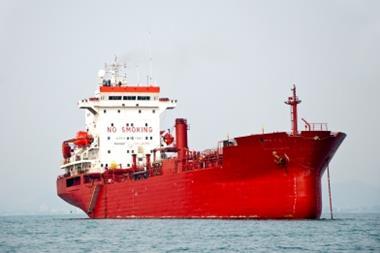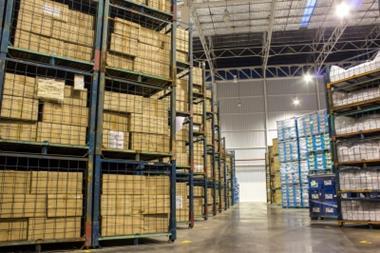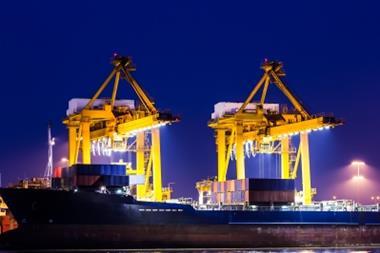Marine operators need to navigate not only more stringent eco-regulations, but also a slowdown in the commodities market worldwide and a rise in natural catastrophes
The marine sector is huge. Although most citizens of Western nations now have nothing to do with the sea other than eating fish, an enormous 90% of the world’s trade is transported by shipping.
Nearly everything we buy and sell passes through ports in 20ft containers. But being almost synonymous with the global economy brings with it exposure to the risks presented by the health of spending and manufacturing around the world – and recent years have been tough.
“Not least among the key risk-management challenges facing our shipping clients today is the global financial crisis,” says Willis Marine managing director Neil Macnaughtan. “Securing financing in a difficult economic climate, negotiating strict sanction regimes, and dealing with complex contractual liabilities are just some of the threats facing shipping operators today.
“All these issues are compounded by the global financial crisis, China’s slowdown and the subsequent contraction in the commodities market.”
As the world’s supply chain, shipping manufacturers are also facing the challenges of increasing complexity of port operations and maintenance, especially in the face of natural catastrophe exposures, such as last year’s devastating ‘Superstorm Sandy’, which flooded New York and New Jersey ports inflicting severe losses on marine cargo owners and their insurers.
“Sandy’s estimated $2.5bn (€1.84bn) to $3bn cost to the global marine hull, liability and cargo markets wiped out US marine premiums for 2012, according to the International Union of Marine Insurance,” says Macnaughtan. “Combine this with new heightened environmental regulations, the pressure to become cleaner and greener in addition to the political uncertainty around the world, and you indeed have a volatile risk environment.
“While the external risk environment is characterised by complexity and interconnectivity, at the same time the marine sector continues to evolve rapidly, and these changes pose a number of pressing concerns from a riskmanagement perspective.”
Ships are getting hugely bigger, posing risks to safety and navigation (see box), plus operators are increasingly looking and working in more risky environments. “The need to find more reserves of oil and gas to support the established economies of Europe and the US has led to increased levels of exploration often in hostile environments and under oceans at depths previously thought to be inaccessible,” says Macnaughtan. “Plans were recently announced to dig the world’s deepest off shore oil and gas well nearly two miles (3.2km) down into the Gulf of Mexico.
“This comes just three years after the Macondo oil spill disaster – an illustration of the enormous risks associated with deep-sea drilling – and it demonstrates the renewed confidence the industry has in executing projects on this scale.”
Retreating ice and better technology is also opening up new Arctic routes (see Expert Insight) with all the associated risks around navigation, weather, icebergs and icing-up of vessels. “Cargoes of oil that need to be heated, what are the challenges there?” asks RSA’s Global Marine claims leader Peter de Boissiere. “Will the equipment necessary to maintain the safety of the cargo be affected by super-cold temperatures? How many vessels will have ice protection? Will the fire-fighting equipment on board work in the conditions if not specifically designed?
“Once more, if you have a damage incident that requires a salvage response, can anyone get there? If they do, they might be stuck there for months. The only salvage available might be the Russian military ice-strengthened tugs.”
Piracy
“Combined with a tough trading environment, maritime operators face many risks as old as the seas themselves,” says Macnaughtan. “Piracy has existed in one form or another for hundreds of years.”
So far this year, there have been 176 reported incidents of piracy and 10 confirmed hijackings, according to the latest figures from the International Maritime Bureau on 31 August. While the Horn of Africa has become notorious for piracy, there have been changes in the distribution of attacks in recent years. “Better risk management practices by the marine industry combined with intervention by international naval forces have helped reduce the threat in the Gulf of Aden and the Straits of Malacca,” says Macnaughtan.
“But the pirate threat has migrated to other areas, such as off the coast of west and central Africa, albeit at lower levels.”
In addition, as the number of successful hijacks decreases, the size of ransom claims and duration of hijacks is increasing. Plus, the desperation and unpredictability of pirates and their backers also seems to be increasing, according to analysts at Willis.
Other regions present new risks: with the growth of jihadi groups in Suez and Egypt, some analysts fear there will be serious attacks on shipping in the region.
“Given the ongoing security situation in Egypt, there has to be a concern that this will degenerate further and become a magnet for terrorists who may try to disrupt shipping operations with potentially serious impacts on both Egypt’s and other countries’ economies,” says RSA’s de Boissiere.
Environmental
Marine operators can find themselves under scrutiny by environmentalists – not just in the case of a major wreck or spillage, but also for the pollution created by vessels.
“Shipbuilders and engine manufacturers are being challenged on all fronts to meet the growing international requirements for a ‘greener’ industry,” says Macnaughtan.
In addition, the drive to low sulpher fuels is also a challenge for operators. “Ports are demanding more controls in that regard, but they come at a cost when parts of the shipping industry are struggling,” says de Boissiere. “That burden, plus the cost of installing scrubbers, might be too much for some operators.
“There could be two potential issues in the claims world: lines going to the wall, with cargoes left distressed in ports around the world; and an increase in fraudulent claims from vessel owners seeking to do away with vessels.”
The loss of the container vessel Rena off New Zealand is an example of the rising cost of dealing with shipping accidents in sensitive areas. “The cost of salvage – estimated at $300m (€221m) – made it the third most expensive in the world. It was many times what it might have been had the accident not occurred in an area where special attention was needed to avoid further damage to the environment,” says Macnaughtan. “Rena had to be cut up and removed in sections, all with incredible care.”




















No comments yet